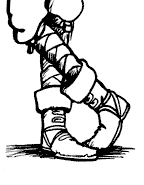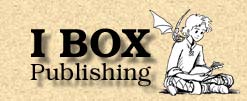About the Creator


About the Creator

| A short biography. . .
Mark Oakley was born in 1970 in the province of Quebec to British immigrant parents, Mary and Robert Oakley. His father, a young engineer newly employed with a large telecommunications firm, moved to Canada with his wife to start the new job and begin a family. The first seven years of Mark's life were lived in a suburb of Montreal in an English speaking community. The low lying social stresses between the French and English common in Canada, and particularly in that region, mystified Mark. He recalls his parents and the French neighbors not liking each other very much, and he recalls being bullied often by the neighborhood kids. It was not until later, when he learned of the long adversarial history between France and England, and of the rocky beginnings of Canadian history, that some of his childhood experiences began to make more sense. Nonetheless, he made a few friends, and it came with difficulty when his father's job required that the family, then with two younger brothers, Gareth and Jamie, move to another city in another province. Their new home was in Saint John, New Brunswick in Eastern Canada. This was a fine place for a growing boy, much different from the suburbs he was used to; this was a neighborhood standing on the cusp of nature. Every home in the region stood on large property. Some of the families in the area even worked their land into modest plots to produce potatoes and other vegetables to supplement their income and earn farmer's tax benefits. There were small lakes, and stands of natural forest, and a freight railway running across the town, and Kent's corner store in the middle of it all; all within walking distance for a healthy eight year old. Mark, unused to not being bullied by other kids, made excellent friends with several of the local children, and lived very happily for three years in this idyllic environment before pulling up roots again. The timing, however, could not have been more perfect; as Mark was just becoming aware that an idyllic, small environment might some day become a confining small town, the Oakleys moved to the metropolis of Toronto. Mark grew up there into his early teens, and through to adulthood. One of his first jobs, taken at the age of seventeen, saw Mark working at Lightbox Animation Studios. The company, a producer of many animated ad spots for well known breakfast cereals and the sort, ran two large animation cameras and held a small staff of animators and cell painters, all of it in a hundred year old three story house on downtown Dundas Street. Mark, after discovering the company in the course of a school project, visited with the director, Greg Duffel, and after several wide-eyed visits to use the animation cameras and film equipment for his own projects, ask if he could have a job. He got one. Mark's duties ranged from pulling weeds in the back yard and emptying pencil sharpeners, all the way to cell painting and eventually being offered a full time position with the company as an in-betweener. (The job of filling in the frames left blank by the key animators.) All within two months. Mark, flattered, decided however to turn down the job offer, wanting to finish high-school first. -During the following year, though, Mark found himself bored and ill satisfied with the academic process. He virtually stopped going to class, spending most of his time working on scripts, comic strips and prose fiction. Mark's grades dropped from an 'A' average to failing in all his classes for the final year of high school. --All except for an accounting course and an unusual english writing class taught by David Young, a published author and playwrite from the Toronto art scene. Practically kicked out of high school, Mark managed through the weight of his portfolio to secure entrance into the esteemed Sheridan College of Art, a major source of North America's most highly qualified animators at that time. Having lost interest in pursuing animation, however, Mark opted instead to enter the illustration program. He only stayed for six months before leaving, disillusioned and irritated once again by the scholastic process, his biggest complaint being that the school made far too many demands on his creative time and energy, which he felt would be better spent on projects of his own determination. So he left the educational system altogether. Part time jobs and sympathetic parents sustained Mark for four more years while he focused his efforts on putting together what is now Thieves & Kings. During that time, he was able to do a few months of back-pack traveling, visiting a number of European countries, and taking a journey across Canada, dipped his feet in both oceans. These types of excursions, while not uncommon among the youth of the time, made for uncommon experiences unique to each traveler. Mark considered this period very valuable in many respects. At the age of 23, Mark returned home to launch I Box Publishing. The decision to devote his efforts to creating Thieves & Kings in comic book format over all the other mediums he'd considered came for one primary reason; he believed that comics made it possible to have an idea, and within only a few weeks turn out a completed product entirely true to the artist's vision. In film or animation, this would certainly take much more time, and involve many more creative people and thus many more conflicts and delays than he had patience for. Mark was not willing to share the workload his visions required with anybody but himself. To this day, Thieves & Kings, from scripting to the cover paintings and everything in between, is entirely his creation. The first issue of Thieves & Kings, when published in 1995, was an immediate success with fans of the fantasy genre. While never penetrating the kind of mass audiences of comic book fans which can make millionaires of people, Mark had always set out to reach an audience he felt was not well represented by the average comic book reader. It was his plan to create something which could appeal more to the general public's tastes, in the form of thick, square bound books printed with bright covers and filled with uplifting and involved tales of adventure; a type of product perhaps better suited to bookstores where, he felt, the adolescent power fantasy common in the comic book world was not the primary source of interest. Still, Thieves & Kings continues to entertain a core audience of devoted comic book readers, the majority of whom are individuals of sterling character who live their lives in full awareness of the grand beauty which is the universe around us all. (He made me say that last part.) Still living in Toronto, Mark continues to write and draw Thieves & Kings. |